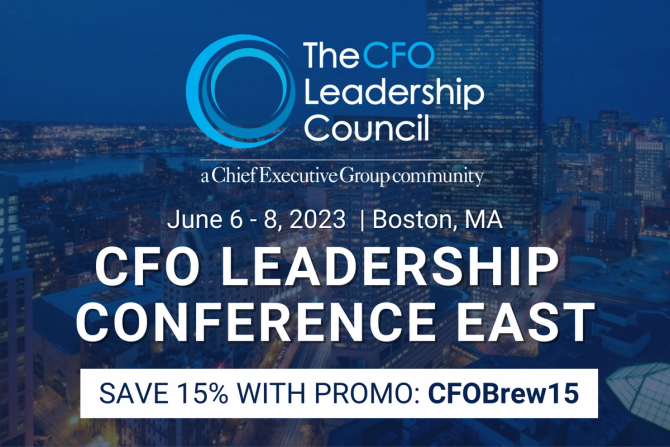Hello, and welcome to Wednesday. Spring finally looks to be here. Go outside, stretch your legs, just let the world go for a few minutes. You deserve it.
In this issue:
— Drew Adamek, Leonard Robinson, Billy Hurley
|
|
Peter Dazeley/Getty Images
There’s an eyebrow-raising C-suite title showing up in the news lately, and when they do, oh boy, it is usually a sign that there is trouble brewing in the boardroom. CROs, or chief restructuring officers—not to be confused with the other CROs, the chief revenue officer or chief risk officer—have been brought on to tackle some of the biggest business implosions in recent months.
Numerous companies have tapped these interim executives including defunct startup lender Silicon Valley Bank, psychedelic startup Field Trip Health, and infrastructure services provider QualTek—to oversee operational and financial restructuring.
But what is a chief restructuring officer, and what do they do?
Quick…get me a CRO! There are a variety of reasons for a company to bring in a CRO. They are usually facing financial troubles, such as decreased financial performance, shrinking cash reserves, a decline on a new round of credit from a frequent lender, or most commonly, lack of trust in management of a company’s CFO, CEO, or COO, Luke Stephenson, associate director at management consultancy MorrisAnderson, which offers fractional CRO services, told CFO Brew.
“[These companies] need someone right here and now that can take charge, handle the situation, stabilize things and, of course in the background, you’re looking to go find someone that can come backfill that need,” Stephenson said.
Deciding to hire a CRO usually is prompted by a company’s stakeholders, namely lenders or attorneys, rather than the company’s executives, according to Stephenson.
Continue reading.—LR
|
|
|
When up against fierce challengers, good teams rally each other to perform at their peak.
You can face today’s uncertainty with that same attitude by bringing finance, accounting, and the business together to run the right plays and reach peak financial performance.
Learn 3 ways to elevate your game during economic instability.
Winners see opportunity in volatility. But you can only capture it if you can see the entire playing field, focus on bigger goals, and plan for challenges in front of you, behind that initial opposition and further downfield.
This ebook offers tips to help you position your organization to win along those three zones:
- Defend your position by managing cash and expenses.
- Ensure your workforce and budgets are ready.
- Look ahead to spot gaps and ensure strategic success.
Stop scrambling. Build a playbook that adapts to different scenarios. And start treating financial performance management as a team sport.
|
|
Photo Illustration: Dianna “Mick” McDougall, Source: Getty Images
Auditors from KPMG LLP didn’t flag the significant material risks that took down Silicon Valley Bank just two weeks before the bank’s collapse, according to a new report in the Wall Street Journal.
While KPMG did find that potential losses from loans were a “critical audit matter”—information that has significant impact on the financial statements—the firm’s auditor did not identify the unrealized bond losses as such.
“The auditors failed to mention the fire in the basement or the box of dynamite on the first floor, but they did point out the peeling paint on the flower box,” Erik Gordon, a University of Michigan business professor, told the WSJ. “How could they miss the interest-rate risk?”
Auditors have been required to include critical audit matters in their audits since 2017. The WSJ found that critical audit matters have not flagged the issues that led to “a collapse of confidence among depositors and investors” in banks across the country.
However, Dennis McGowan, vice president of professional practice at the Center for Audit Quality, told the WSJ that auditors can’t predict every scenario that would make an issue a critical audit matter.
Auditors are under increasing pressure to improve the quality of their audits. In December 2022, the Public Company Accounting and Oversight Board (PCAOB) issued a report that found “a collective increase in the number of audits with deficiencies” including, among other things, leaving out critical audit matters.
The PCAOB recommended that audit firms bring in outside experts to help identify critical audit matters, expand the use of audit technology, and build communication tracking systems to improve the quality of audits.—DA
|
|
Die Hard/20th Century Fox via Giphy
Sometimes a party gets too big, and it’s tough to figure out where everybody came from, especially that dude who showed up with your friend and still hasn’t taken his shoes off.
Companies, too, have their own gathering of suppliers, vendors, and partners. And some will spill (metaphorical) salsa all over your (proverbial) couch.
A report from the risk-management firm Cyentia Institute and cybersecurity rating company SecurityScorecard found that 98% of surveyed organizations have relationships with at least one vendor who suffered a breach in the last two years.
The 230,000-plus organizations had an average of about 10 third-party partners. The information services sector had the highest number of connections: 25.
When there’s too much third-partying, some risk-specific steps can help organizations make a giant contractor web feel smaller and easier to manage. One helpful measure: defining business priorities, which have a way of revealing “must avoid” outcomes.
“Growth targets, new markets that you’re entering, new products that you’re launching, your corporate objectives, goals, initiatives, and projects. The mirror of those is all the things that can’t go wrong,” said Chris Matlock, VP, advisor, and research leader for risk and corporate strategy at the market-intelligence firm Gartner.
Companies have experienced so many third-party risk events that the concerns have reached the board level, said John Wheeler, senior advisor at the risk-management platform AuditBoard.
“A lot of companies, in my estimation, have gone to market with new digital products and services to deliver things in newer and safer ways as a result of the pandemic. But in their haste, they really haven’t identified and managed the risk as they should,” Wheeler told IT Brew.
Continue reading on IT Brew.—BH
|
|
|
(Book)keep your wits about you. Forms, forms, and…more forms. If bookkeeping leaves you outta patience and short on time, BELAY is your lifeline. Get paired with a US-based bookkeeper who will handle everything from payroll to tax prep. See all the tasks a bookkeeper can take off your plate in BELAY’s report.
|
|
Today’s top finance reads.
Stat: 18.7%. That’s how much traffic to Twitter’s ad portal fell year over year, but for the life of us, we can’t think of any reason why this might be happening. (Similarweb)
Quote: “The financial challenges that a number of countries have experienced are casting a shadow on our outlook. We are seeing a lot of downside risks going forward.”—Pierre-Olivier Gourinchas, the IMF’s research director, in talking about global risk and growth projections. (the Wall Street Journal)
Read: Convincing people to come back to the office is proving to be an intricate dance. (the New York Times)
|
|
-
Americans are feeling increasingly financially stressed.
-
The Biden administration is exploring regulations for AI tools to combat crime and misinformation.
-
Tupperware is in danger of going out of business, leaving us only with memories of potlucks past.
-
Small businesses are struggling with the credit squeeze.
|
|
CFO LEADERSHIP CONFERENCE
|
Have you heard? The CFO Leadership Conference: East is taking over Boston’s Copley Place this June.
In just three days, you'll dive head-first into a program that covers all tracks leading to strong job performance and sustained company growth. It’s comprehensive. It’s authoritative. It’s a “must-attend.”
Don’t miss out on an opportunity this great. Save 15% on your tickets with code CFOBrew15 at checkout.
Get your tickets here.
|
|
Catch up on top CFO Brew stories from the recent past:
|
|
|









